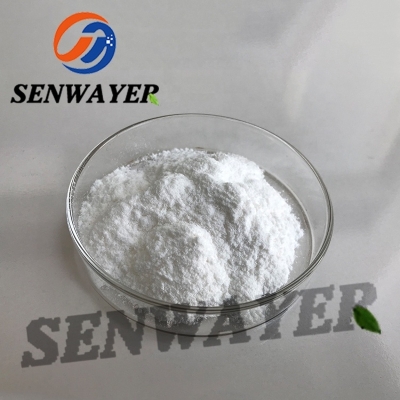-
Categories
-
Pharmaceutical Intermediates
-
Active Pharmaceutical Ingredients
-
Food Additives
- Industrial Coatings
- Agrochemicals
- Dyes and Pigments
- Surfactant
- Flavors and Fragrances
- Chemical Reagents
- Catalyst and Auxiliary
- Natural Products
- Inorganic Chemistry
-
Organic Chemistry
-
Biochemical Engineering
- Analytical Chemistry
- Cosmetic Ingredient
-
Pharmaceutical Intermediates
Promotion
ECHEMI Mall
Wholesale
Weekly Price
Exhibition
News
-
Trade Service
In recent years, tumor treatment has entered the era of immunotherapy, and immune checkpoint inhibitors represented by anti-PD-1 mAbs have progressed the most, and have also achieved breakthroughs in the field of many solid tumors
Indications were explored by combining anti-PD-(L1) monoclonal antibody with radiotherapy, chemotherapy, and targeted therapy
To explore other potential druggable targets, but the effect of monotherapy on immune checkpoints such as LAG3 and TIGIT is limited, and it is currently trying to expand the indications in combination with anti-PD-1 monoclonal antibody
In addition to focusing on immune checkpoints, many companies have also begun to focus on the development of T cell agonists, including antibodies targeting OX40, CD27, CD40, GITR and 4-1BB
Iteratively upgrade dual-antibody and multi-antibody technology based on PD-(L)1, such as PD-1/CTLA-4, PD-L1/CTLA-4 and other dual-immune checkpoint dual-antibodies, and some companies are deploying PD -The immune checkpoint of L1/4-1BB is combined with the double antibody of the agonist site
PD-1/CTLA-4 dual antibody
PD-1/CTLA-4 dual antibodyCombination blockade of PD-1 and CTLA-4.
Kangfang Biological AK104
PD-1/CTLA-4 dual antibody
There are many companies deploying PD-1/CTLA-4 double antibody, and the fastest progress is the domestic self-developed product AK104 of Kangfang Bio
In September 2021, CDE has accepted the new drug marketing application of kadunilimumab (AK104) for the treatment of recurrent/metastatic cervical cancer, and granted priority review qualification
Figure 1.
The double antibody is based on the Tetrabody core technology platform of Aesco, which combines the entire structure of the anti-PD-1 monoclonal antibody (piamprimab) independently developed by Acupuncture and approved for marketing, and the anti-PD-1 monoclonal antibody assigned to Merck & Co.
The mechanism of action of AK104 is as follows:
Compared with normal tissue and peripheral blood cells, tumor-infiltrating lymphocytes co-express PD-1 and CTLA-4 at much higher levels, therefore, anti-PD-1/CTLA-4 bispecific antibodies are superior in tumor tissue enrichment.
Currently, the anti-PD-1 and anti-CTLA-4 antibodies that can be used for combined therapy have a great influence on the efficacy and safety of ADCC and ADCP mediated by the Fc segment
Furthermore, activated macrophages in the tumor microenvironment play a key role in mediating immunosuppression by secreting pro-inflammatory cytokines, such as IL-6 and IL-8
In summary, the mechanism of action of AK104 emphasizes the advantages of tumor enrichment
AstraZeneca MEDI5752
PD-1/CTLA-4 dual antibody
MEDI5752, is a monovalent bispecific human IgG1 monoclonal antibody engineered to reduce FC effector function
MEDI5752 uses DuetMab technology, that is, disulfide bond shifting to avoid light chain mismatches
Figure 2.
DuetMab Technology
Although the valence and structure are different from AK104, the results of the MEDI5752 basic research test published in "Cancer Discovery" are the better clinical efficacy and lower toxicity of PD-1/CTLA-4 double antibody.
The effect gives the specific mechanism
.
Figure 3.
Target binding of MEDI5752
MEDI5752 preferentially inhibits CTLA-4 in activated PD-1+ T cells
.
As shown above, MEDI5752 preferentially saturates CTLA-4 in PD-1+ T cells compared to PD-1-T cells
.
In addition, it is worth mentioning that MEDI5752 also leads to the endocytosis and degradation of PD-1, and can preferentially accumulate in the tumor microenvironment (TME), while blocking the PD-1 pathway, providing stronger in the TME CTLA-4 inhibition
.
Demonstrated enhanced antitumor activity compared to the monoclonal antibody combination of PD-1 and CTLA-4
.
In a phase 1 clinical trial, the therapy showed promising anticancer activity in patients with advanced solid tumors who were not eligible for standard treatment, according to the 2022 AACR conference abstract
.
Combining different doses, the objective response rate was 19.
8%, and the median duration of response was 17.
5 months
.
Biomarker analysis showed that MEDI5752 strongly blocks PD-1 and CTLA-4 signaling and shows the potential to expand existing or new T cell clones
.
Figure 4.
PD-1/CTLA-4 dual antibody under investigation
In addition to PD-1/CTLA-4 double antibody, there are many enterprise layouts, PD-L1/CTLA-4 double antibody is also a current research hotspot, and the fastest progress is Corning Jereh's KN-046
.
Figure 5.
Crystal structure of KN046
KN046 is a PD-L1/CTLA-4 bispecific antibody independently developed by Corning Jereh.
Its innovative design includes: fusion of CTLA-4 and PD-L1 single-domain antibody with different mechanisms, which can be targeted and enriched in PD-L1.
The tumor microenvironment with high L1 expression and clearance of Treg that inhibit tumor immunity
.
Several solid tumor programs have advanced to Phase III
.
PD-1/LAG 3 double antibody
PD-1/LAG 3 double antibody LAG-3 (lymphocyte activation gene 3) is an inhibitory immune checkpoint mainly expressed on T cells.
Its mechanism of action is as follows:
Mainly binds to MHC II, negatively regulates T cell proliferation and activation;
It can combine with Galectin-3 and LSECtin to affect the function of T cells;
Binds to fibrinogen-like protein 1 (FGL1) and promotes tumor immune escape
.
Figure 5.
Mechanism of action of LAG-3 targets
On March 18, 2022, the FDA officially approved the combination of Bristol-Myers Squibb's anti-LAG-3 monoclonal antibody (Relatlimab) and its own anti-PD-1 monoclonal antibody (Nivolumab) for the treatment of metastatic melanoma
.
Relatlimab also became Bristol-Myers Squibb's third immune checkpoint inhibitor after Nivolumab and Ipilimumab
.
For LAG-3 monoclonal antibody, the effect of monotherapy is limited, and the expansion of indications in combination with anti-PD-1 monoclonal antibody has become the mainstream trend of research and development
.
With the popularity of bispecific antibodies, some companies have begun to accelerate the deployment of PD-1/LAG-3 double antibodies
.
For example, the PD-1/LAG-3 dual antibody (RO7247669 injection) developed by Roche is actively conducting Phase 1/2 clinical trials worldwide, covering the proposed development indications: advanced hepatocellular carcinoma, metastatic melanoma, Non-small cell lung cancer, esophageal squamous cell carcinoma, metastatic esophageal cancer,
etc.
The domestic companies are: Anmai Bio (EMB-02, PD-1/LAG-3 double antibody), Kangfang Bio (AK-129, PD-1/LAG-3 double antibody), Zai Lab (MacroGenics cooperation) MGD013, PD-1/LAG-3 double antibody)
.
Figure 6.
PD-1/LAG3 dual antibody products under development
PD-L1/TGF-β dual antibody
PD-L1/TGF-β dual antibody In recent years, double antibodies targeting tumor microenvironment-related factors have gradually increased.
The targets include VEGF, VEGFR2, TGF-β, etc.
The most representative is PD-L1/TGF-β double antibody, but most of them fail.
Example
.
On August 23, 2021, Merck announced the termination of the phase II clinical trial of M7824 (PD-L1/TGFβ dual antibody) combined with chemotherapy in the first-line treatment of cholangiocarcinoma, because it is unlikely to reach the OS endpoint and the study did not find new safety signals
.
The termination also became the third clinical study of M7824 that failed
.
Two other trials in the past (lung cancer, bile duct cancer second-line) failed to meet expectations
.
Figure 7.
Structure and Model of M7824
Theoretically, TGF-β is a tumor-promoting factor whose expression is greatly increased in the late stage of tumorigenesis.
It promotes the growth, infiltration and metastasis of tumor cells by inducing immune escape, promoting angiogenesis, and inducing epithelial-mesenchymal transition
.
PD-L1 is also highly expressed on tumor cells, and blocking the two targets of PD-L1 and TGF-β should bring obvious anti-tumor activity
.
However, the successive failures of M7824 cast a shadow over the future of the development of PD-L1/TGFβ dual antibodies
.
PD-L1/4-1BB double antibody
PD-L1/4-1BB double antibody PD-L1/4-1BB double antibody, the fastest progress is BioNTech's GEN1046 (PD-L1×4-1BB) double antibody.
Recently, the preclinical characteristics of GEN1046 and the results of the first human study have also been published
.
GEN1046 is a full-length IgG1 subtype, PD-L1 × 4-1BB double antibody, produced by Fab arm exchange of monoclonal fully human PD-L1 and humanized 4-1BB antibodies using the DuoBody® technology platform, based on double The in vitro bioactivity of specific patterns was selected for parental PD-L1 and 4-1BB antibodies
.
The parent antibody contains corresponding mutations F405L/K409R in the CH3 domain (promoting heterodimerization of the Fab arms, resulting in bispecific molecules) and Fc silencing mutations L234F/L235E/D265A (preventing binding to FcγR and C1q, removing ADCC, ADCP and CDC effect)
.
Figure 8.
Structure of GEN1046
The dose-escalation phase of the Phase I/IIa trial (NCT03917381) enrolled 61 patients with advanced solid tumors who received GEN1046 at 9 escalating dose levels (25-1200mg Q3W) with common tumor types including 12 colorectal cancers, 9 ovarian cancers , 6 cases of pancreatic cancer, 6 cases of NSCLC
.
All patients received multiple lines of therapy, with a median of 3 lines of therapy (range: 1-11)
.
24 (39.
3%) patients received systemic antitumor therapy and the best response was disease progression (PD); 23 (37.
7%) patients had previously received a PD-(L)1 inhibitor, of which 8 (34.
8%) ) in patients with most recent PD-(L)1 inhibitor best response to PD
.
Figure 9.
Antitumor efficacy of GEN1046 in patients with advanced solid tumors
It has shown good clinical treatment effect and safety in the initial stage, and we look forward to the accumulation of research data with a larger sample size
.
There are also many domestic companies deploying dual antibodies and polyclonal antibodies against this target, all of which are in the early clinical stage.
The summary is as follows:
Figure 10.
Domestic 4-1BB double antibody and polyclonal antibody products under development
double antibody combined double antibody
double antibody combined double antibody Based on the tolerable safety and anti-tumor activity of double-antibody, many companies have begun to try the multi-target combination scheme based on double-antibody
.
On January 5, 2022, Kangfang Bio announced that its self-developed world's first innovative new tumor immunotherapy drug AK104 (PD-1/CTLA-4 double antibody, kadonilimumab) combined with AK112 (PD-1/VEGF double antibody) Anti) Phase Ib/II clinical trial application was approved by CDE, with or without chemotherapy in the treatment of advanced non-small cell lung cancer (NSCLC)
.
Corning Jereh is also trying the efficacy and safety of KN026 (HER-2/HER2 dual antibody) combined with KN046 (PD-L1/CTLA-4 dual antibody) in the treatment of HER-2 positive solid tumors
.
Preliminary results were also announced at the 2022 AACR Congress
.
As of August 10, 2021, a total of 24 patients with ≥1L systemic therapy, HER2-positive non-breast and gastric cancer, locally advanced unresectable or metastatic solid tumors were enrolled, and 20 patients received at least one tumor assessment: objective response The ORR rate (ORR) was 55.
0%, the disease control rate (DCR) was 85.
0%, and the 6-month PFS rate was 84.
1%; among the 11 evaluable colorectal cancer patients, the ORR and DCR were 45.
5% and 90.
9%, respectively
.
Summarize
Summarize At present, double antibody has become another hot trend after PD-1, CAR-T, antibody conjugated drugs and other popular tracks
.
With the entry of new double antibodies into the market and the approval of more indications for the listed double antibodies, the global market size of double antibodies will exceed 50 billion yuan in 2025
.
To this end, global pharmaceutical giants have successively joined the R&D army and started a competition mode
.
In view of the current development of dual-antibody drugs, in order to prevent ineffective competition and waste of medical resources, on April 11, 2022, in order to further standardize the clinical research and development of bi-specific antibody-based anti-tumor drugs, CDE released the "Bi-specific antibody-based anti-tumor drugs".
Technical Guiding Principles for Clinical Research and Development of Oncology Drugs (Draft for Comment)", which is open to the industry for comments
.
For the practitioners of double antibody, higher requirements are put forward.
How to effectively make up for the clinical needs that cannot be met by immune monoclonal antibody drugs, and whether the target selection is reasonable, are all issues that need to be solved urgently
.
references
references [1] Cariad Chester, Miguel F.
Sanmamed, Jun Wang, and Ignacio Melero.
Blood.
2018; 131:49-57
Sanmamed, Jun Wang, and Ignacio Melero.
Blood.
2018; 131:49-57
[2] Muik A, Garralda E, Altintas I, et al.
CancerDiscov.
2022;candisc.
1345.
2021.
CancerDiscov.
2022;candisc.
1345.
2021.
[3] Hussein A.
Tawbi, MD, et al.
N Engl J Med.
2022 Jan 6;386(1):24-34.
Tawbi, MD, et al.
N Engl J Med.
2022 Jan 6;386(1):24-34.
[4] Joanne Ellis, et al.
Clin Pharmacol Ther.
2021May;109(5):1293-1303.
Clin Pharmacol Ther.
2021May;109(5):1293-1303.
[5] Solinas C, et al.
Cancers (Basel).
2019;11(8):1213.
Cancers (Basel).
2019;11(8):1213.







